How Many Outlets Can Be On A 20-Amp Circuit? (Find Out Now!)

Each home’s electrical panel has circuit breakers that act as a safety device for your home. They are each is designed in a way so as to cut power off when the current that passes through exceeds the designated rating.
Knowing how many outlets a 20-amp circuit can handle is an important safety concern. For the most part, they can handle up to 10 receptacles. A good rule of thumb is to give each receptacle a maximum draw of 1.5 amps. That means up to 10 receptacles on a standard 20-amp circuit.
Do You Need Electricial Wiring or Panel Upgrade Services?
Get free, zero-commitment quotes from pro contractors near you.

Why the Restrictions on a 20-Amp Circuit?
Safety is always the primary concern when it comes to any electrical panel. There are fail-safes put into place to ensure that the panel stays in safe, working order. Without them, the risks are innumerable to both the panel and the property as a whole.
The main reason for the restrictions is to prevent electrical power surges, overheating wires, and fires. It is important to note that these electrical outlets won’t draw power until something is plugged in. So, in theory, a 20-amp circuit can handle many more outlets without overloading the breaker, but who has outlets that they won’t use?
Knowing the Allowable Breaker Load
There are also codes and ordinances both federally and in your local municipality to be aware of. For instance, the National Electrical Code does not currently put a limit on the number of receptacles that can be placed on a single 20-amp circuit.
NEC Specification. Knowing that, though, it is safe to assume that the breaker will be overloaded when drawing more current than the breaker can handle. The NEC does have one important specification. They dictate that a circuit breaker should not be responsible for more than 80% of its rated load unless the breaker has been labeled otherwise.
How to determine wattage. We know that the NEC suggests no more than 80% of the breaker limit be reached. But how do we determine the wattage behind those amps? Well, we know that 80% of 20 amps is 16. So, here’s how to convert to wattage.
Watts = Amps x 120 volts. The reason for the 120 volts is that most of the homes throughout the US run 120-volt circuits in each of the rooms of the home. The only exception is a special appliance like a dryer.
Surge protection. Following this standard, your typical 20-amp circuit should not go past the 16-amp mark. The point is to allow for any temporary surges that can happen when an appliance starts up. That covers anything as small as a power saw up to a huge central system like an air conditioner.
The Key is Avoiding Overloads
Perhaps the biggest consideration behind a 20-amp circuit is preparing to handle overloads. But how does that happen? Well, when deciding the number of receptacles that a 20-amp circuit can handle, keep in mind what will be plugged into each of them.
The Wattage Conversion. As we know, the total draw on a 20-amp circuit should be no more than 16 amps at any given moment. What does that look like from a wattage perspective? Well, on a conventional 12-volt circuit, that would equate to a power draw of 1,920 watts at the most. That is despite the fact that the breaker won’t trip until it surpasses 2,400 watts.
Limit the number of receptacles. If you are plugging in an appliance that uses a lot of juice, try to limit the number of receptacles on that circuit. So, if you are using something like an electric heater that can draw up to 1,500 watts, make sure that circuit is powering very few other things.
Spread Out the Load
To avoid potential surges and overloads, it is important to spread the load and power distribution on a particular breaker within the panel. To do so, consider combining electrical outlets and lights onto a single breaker. The reason for this is because your lights will generally draw less power than any of the appliances in your home.
Kitchen. It is also a good idea that your kitchen have a minimum of two outlets, and both should be on their own separate circuit. The reason being that if one of the breakers trips, your entire kitchen won’t go down in the process.
Dedicated appliances. There are certain appliances that should be on a dedicated circuit, however. Your dishwasher, for instance, should be on its own. That means that nothing else, not even lights, should be included on that circuit to prevent overloading.
Common Tips
For most home circuits, it is probable that only one outlet will be in use at a given time. Given this fact, it is a good idea to spread out as many outlets around the house as possible on a single circuit. The reason being so that there will be power when you need it.
12-gauge wire. For 20-amp circuits, it is a must to use 12-gauge wire for connecting said 20-amp circuit. When installing those receptacles in the kitchen, bathroom, laundry room, or even outdoors, a ground fault interrupting receptacles are generally necessary.
Keep in mind. Remember that the outlets only draw power when something is plugged in. It is certainly possible to have more outlets than you need provided they will not be in use at the same time. In areas where multiple appliances need to run, it is a good idea to keep them on separate breakers to prevent overloads from occurring.
The 6 feet rule. While appliances should be on their own circuit, there is a rule of thumb for bedrooms. Generally speaking, there should be an electrical outlet every 6 feet or so. At the very least, there should be an outlet on every wall. In washrooms and kitchens, that changes based on the number of appliances involved.
Do You Need Electricial Wiring or Panel Upgrade Services?
Get free, zero-commitment quotes from pro contractors near you.

Related Questions
While most homes in the United States operate under the outlined set of requirements, there are different situations that can arise. Here are a few questions to consider.
Do I Need 20-Amp Outlets in the Kitchen?The NEC, as well as the National Fire Protection Association (NFPA), recommend providing at least 120-volt, 20-amp circuits for supplying power to GFCI receptacles. GFCI is a ground fault circuit interrupter. This recommendation is for both eating areas and countertops.
The reason why 20 amps are required versus something like 15 is that kitchens tend to have much higher power requirements compared to other areas. Even smaller appliances like mixers, toaster ovens, and blenders require a substantial bit of power.
Two 20-amps are required to spread out the coverage within the area so that they can be both be used without fear of an overload. Moreover, in the event that one circuit goes out, the other should maintain power in the event that one circuit does get overloaded.
How Many Lights Can Go on a 15-Amp or 20-Amp Breaker?In the United States, in particular, hanging lights outside and on the house has become a tradition. But don’t just go plugging in those lights without knowing the impact that they have on the circuit first.
There is no specific number of lights that can go on a 15- or 20-amp breaker. The determining factor is the amperage and wattage of those lights. For a 20-amp breaker, using the 80% limit, that would equate to 1,920 watts (or 1,725 for a 15-amp).
Knowing the wattage of the lights you plan to use is a good indicator of just how many you can plug-in without fear of overloading the circuit.
How Many Outlets Can Be Put on a 15-Amp Circuit?As mentioned just above, the 80% limit on a 15-amp circuit is about 1,725 watts. But how many outlets does that translate to? Well, remember that you can have as many outlets as you want so long as they are not all simultaneously in use.
Following the 1 outlet per 1.5 amps rule, it is recommended that there be no more than 8 outlets on a 15-amp circuit. Anything more than that could potentially overload the circuit, tripping the breaker with each overload. With enough trips, you run the risk of permanently shutting the system down until a professional can reset it.

Ryan Womeldorf has more than a decade of experience writing. He loves to blog about construction, plumbing, and other home topics. Ryan also loves hockey and a lifelong Buffalo sports fan.
More by Ryan Womeldorf



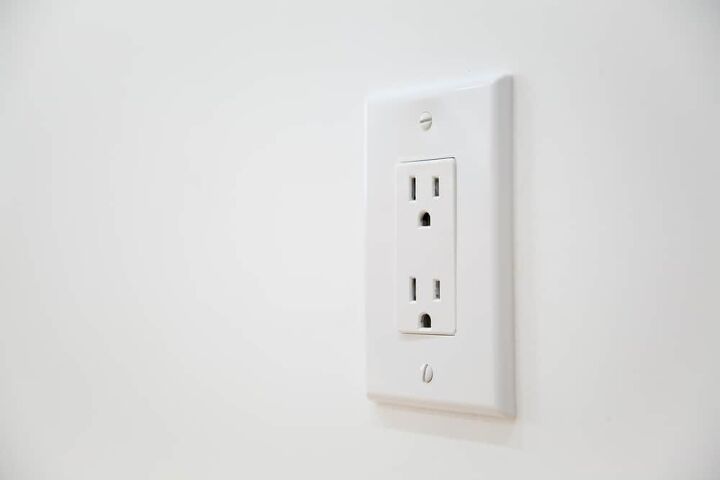






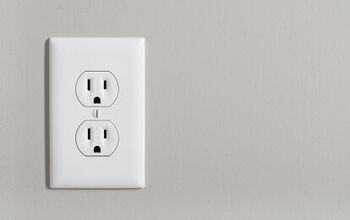
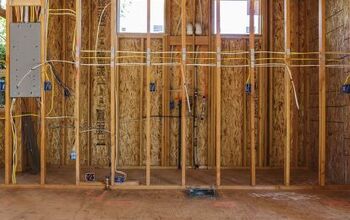
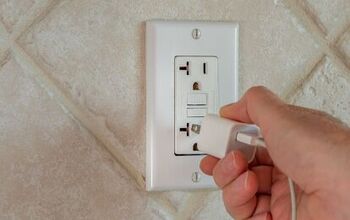
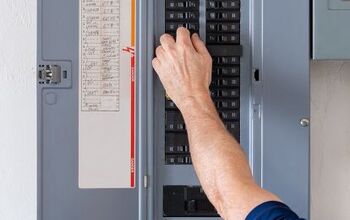
![The 10 Best Table Saws - [2022 Reviews & Buyer's Guide]](https://cdn-fastly.upgradedhome.com/media/2023/07/31/9070645/the-10-best-table-saws-2022-reviews-buyer-s-guide.jpg?size=350x220)










![How To Reset A Whirlpool Cabrio Washer [In 5 Easy Steps!]](https://cdn-fastly.upgradedhome.com/media/2023/07/31/9076531/how-to-reset-a-whirlpool-cabrio-washer-in-5-easy-steps.jpg?size=350x220)

